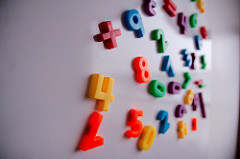Statistics for younger students
By Mary Bigelow
Posted on 2016-12-10
 Our math department wants students in all subjects and grade levels to do more with statistics and graphing. I do graphing with my students in elementary science, but are younger students ready for statistics? —G., Pennsylvania
Our math department wants students in all subjects and grade levels to do more with statistics and graphing. I do graphing with my students in elementary science, but are younger students ready for statistics? —G., Pennsylvania
The science and engineering practices in the Next Generation Science Standards (NGSS) include several that incorporate statistics and graphing: Analyzing and Interpreting Data, Using Mathematics and Computational Thinking, and Obtaining, Evaluating, and Communicating Information.
I ran your question past a colleague who is data specialist and researcher (and a former elementary teacher). She agreed it’s all in the strategies you use and how you present problems to younger students. Keep it simple to start!
We brainstormed some concepts that younger students could understand and use as part of their science investigations:
- Determine central tendencies—mean, median, mode—using concrete examples such as the length of their hands or the height of plants they are growing. They could calculate the mean (numerical average), the median (list all values from lowest to highest and determine the midpoint value), and mode (the most common value). How close are these to each other? What is the range of values (highest and lowest)?
- Fine-tune (or disaggregate) these values by gender, age, type of plant, etc. The questions they ask will determine how they analyze this. (Are boys’ hands larger than girls’?)
- Doing a scatter plot is a good way to introduce correlation. Do some values increase together (positive correlation)? And emphasize that correlation is not causation!
Many teachers go into panic mode at the beginning of the required statistics class in grad school. But with the apps and websites available today, a lot of the arithmetic is easy. The more important and more interesting challenge continues to be understanding the underlying concepts and choosing the right process.
Resources:
Photo: https://www.flickr.com/photos/janih/8541889792/
Disclaimer: The views expressed in this blog post are those of the author(s) and do not necessarily reflect the official position of the National Science Teaching Association (NSTA).


